Read the first part of the article!
As we promised in our last article “A trip to Nafplio, part 1“, we will continue our trip to Nafplio with a dip in Tolo and its history, a visit to the Folklore Museum and the Childhood Museum and a discussion with Mrs. Ioanna Papantoniou, founder of the Peloponnesian Folklore Foundation, galaktoboureko and bread from the Kostopoulos bakery, a lonely ascent to the fortress of Akronafplia, a wonderful meat meal in Stavlos restaurant and the sweet story of its owner Mr. Nikos, ice cream from Koustenis shop, a conversation with Dimitra at the reception of the Hotel Ippoliti, breakfast at the hotel and a visit to the Holy Monastery of Panagia Katakekrymeni-Portokalousa in Argos, before our return to Athens.
A dive in Tolo
We will start the second part of the travel tribute to Nafplio with a dip in the sea of Tolo, so that we can cool off a bit! Tolo is a seaside village a short distance from Nafplio, built very close to the sea. As we have read, the Gulf of Tolo has been already mentioned by Homer. Today’s Tolo was built near the ruins of the ancient city. The area passed through Frankish, Venetian and Ottoman occupation, while the port in the 17th century served as a base for the Venetian campaign against the Turkish-occupied Nafplio, as it was the safest port in the region.

Tolo faces three islands, Koronisi, Romvi and Daskalio. During the Turkish occupation in Daskalio, there was a secret school where children were taught the Greek language and history. Later in Tolo, land was granted to refugees from Crete, who turned to the sea and created a small fishing village. This village in 1916 became the community of Tolo. During the Second World War, a station of the German and Italian fleet was established in Tolo and the inhabitants suffered greatly. From the middle of the 20th century Tolo has become an evolving tourist resort.

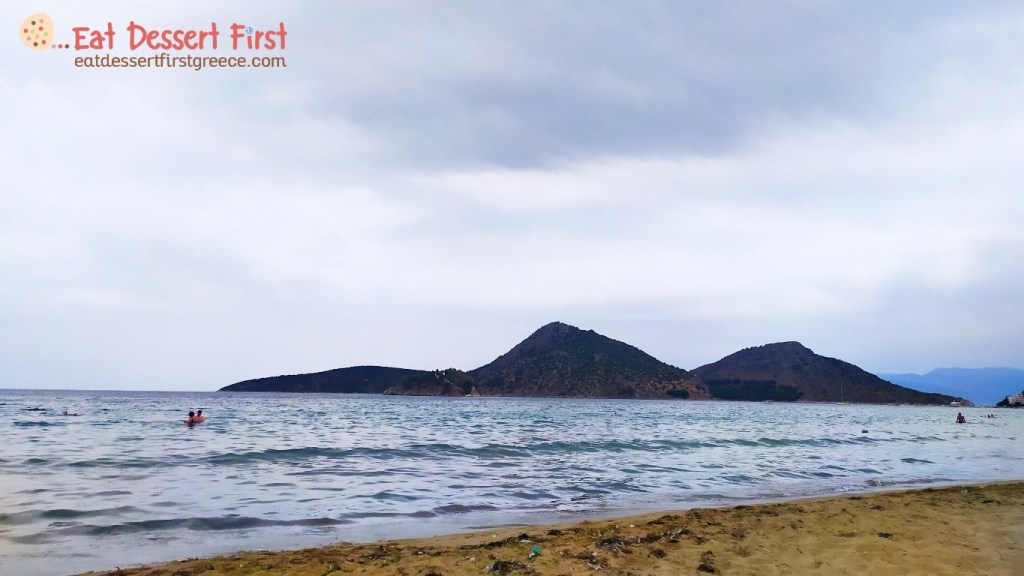
On the sandy beach of Tolo, a warm, sea was waited for us, without stones, with clear water, suitable for families since it is shallow for several meters so that children can play. You can spread your towel on the sand, but there is also an organized area with sunbeds and umbrellas. There are shops around for coffee and food. We enjoyed our swim, laid down on our towels and organized the rest of our day…

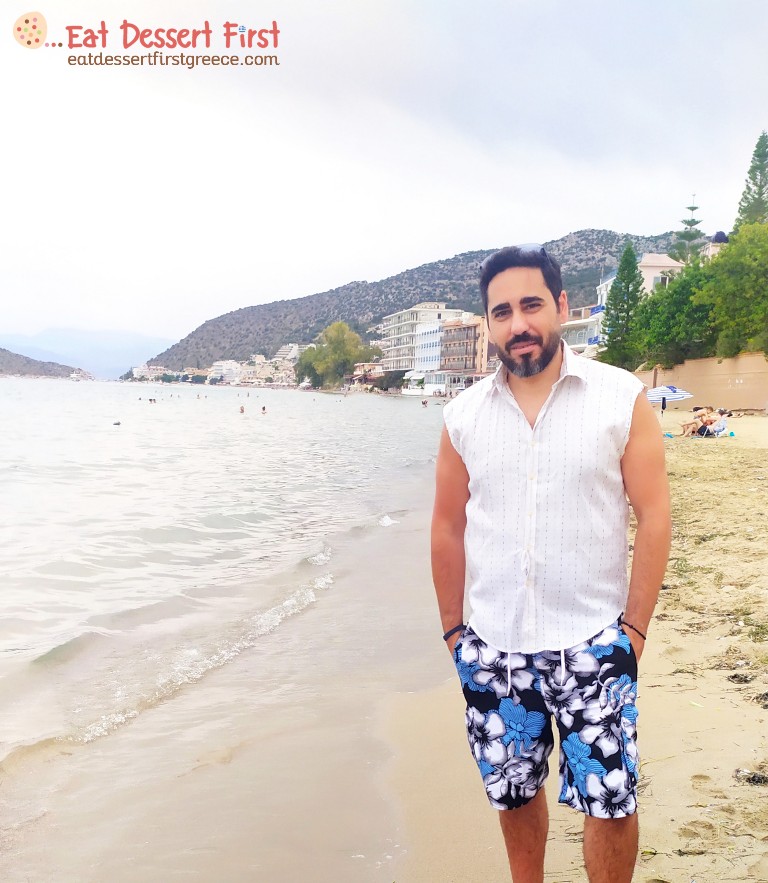
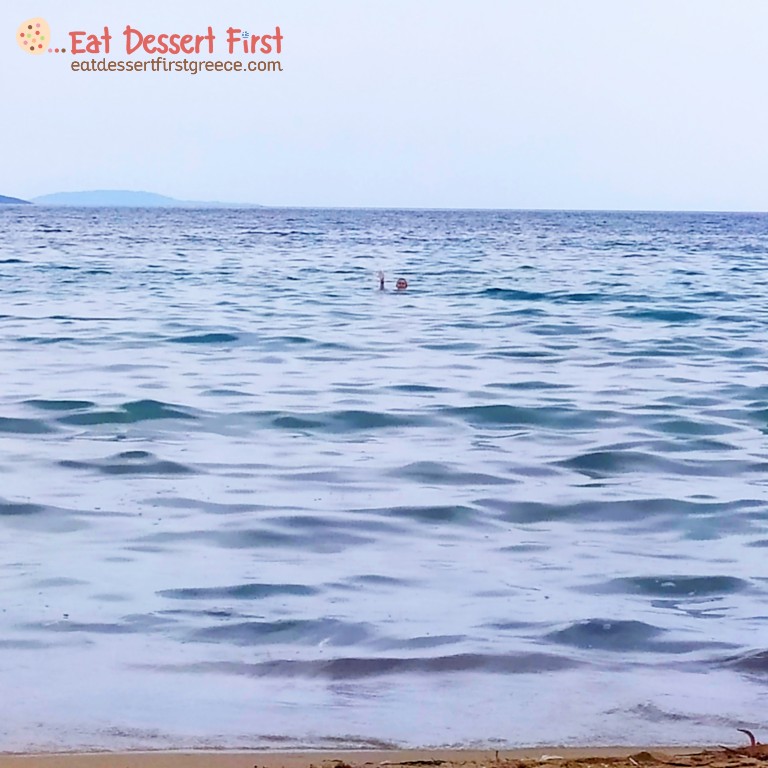
Visit to the Folklore Museum of Nafplio
After swimming in the sea we returned to hotel Ippoliti of the group Neoklasiki Group which hosted us and we prepared for another tour of the city, which we wanted to have museums as a theme. So, we chose to visit the Folklore Museum and the Museum of Childhood, which belong to the Peloponnesian Folklore Foundation (PLI).
The Folklore Museum of Nafplio of the Peloponnesian Folklore Foundation is located on an alley in the old town of Nafplio. The collections of the Peloponnesian Folklore Foundation include around 50,000 objects, mainly Greek local costumes and their sections, but also objects of art, theater and handicrafts. The exhibition presents “a bold free installation” which aims to emphasize the diversity of the institution’s collecting philosophy. The Folklore Museum was awarded the “European Museum of the World” award in 1981.
We read that the Peloponnesian Folklore Foundation “Vasileios Papantoniou” was founded in 1974 with headquarters in Nafplio. Its goal is to save, study and promote modern Greek culture.
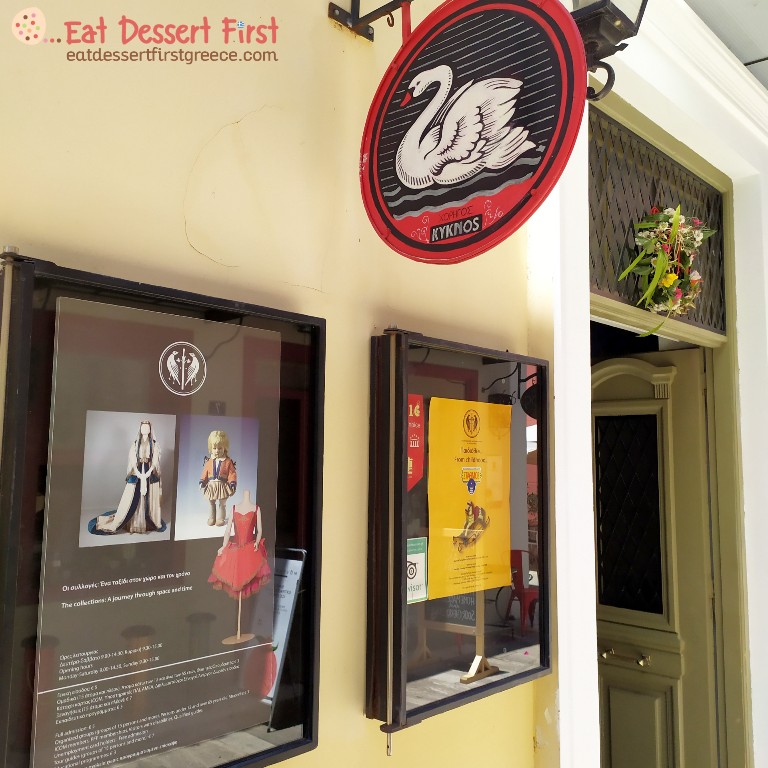
The permanent exhibition extends on the ground floor and on both floors of the building. Its title is “Collections: a journey through space and time.” On the ground floor is the museum’s shop. As we climbed the ladder for the permanent exhibition, we saw an installation with the museum’s contributors, which we really enjoyed as it made people a clear part of the museum experience and reflected the family atmosphere that we are sure characterizes the Peloponnesian Folklore Foundation.
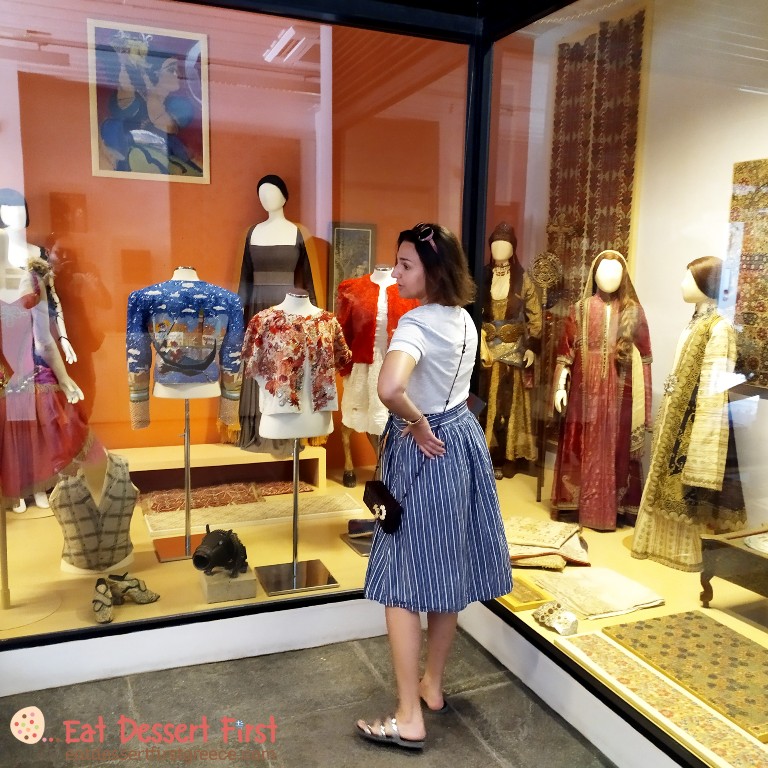

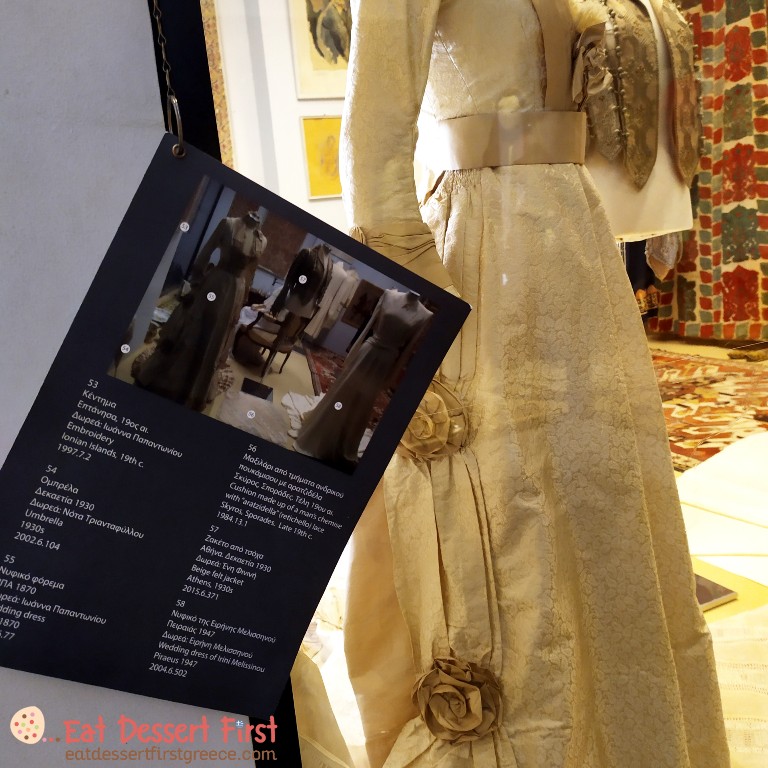
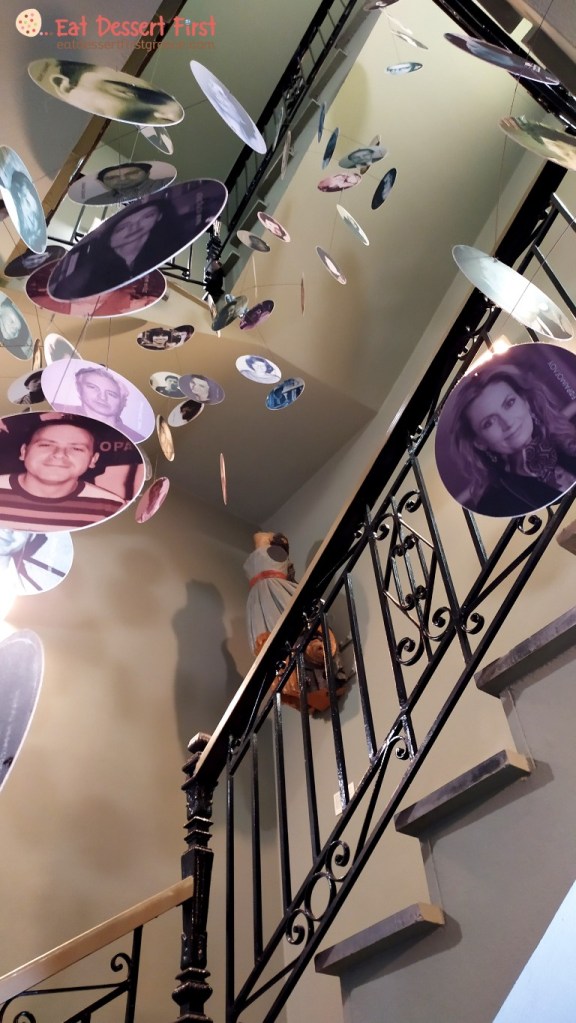
In the permanent exhibition of the Folklore Museum we saw moments of our history -from the 19th to the 21st century- in a lively and bold way, with dolls dressed in costumes and clothes of the time and rooms furnished with old furniture.

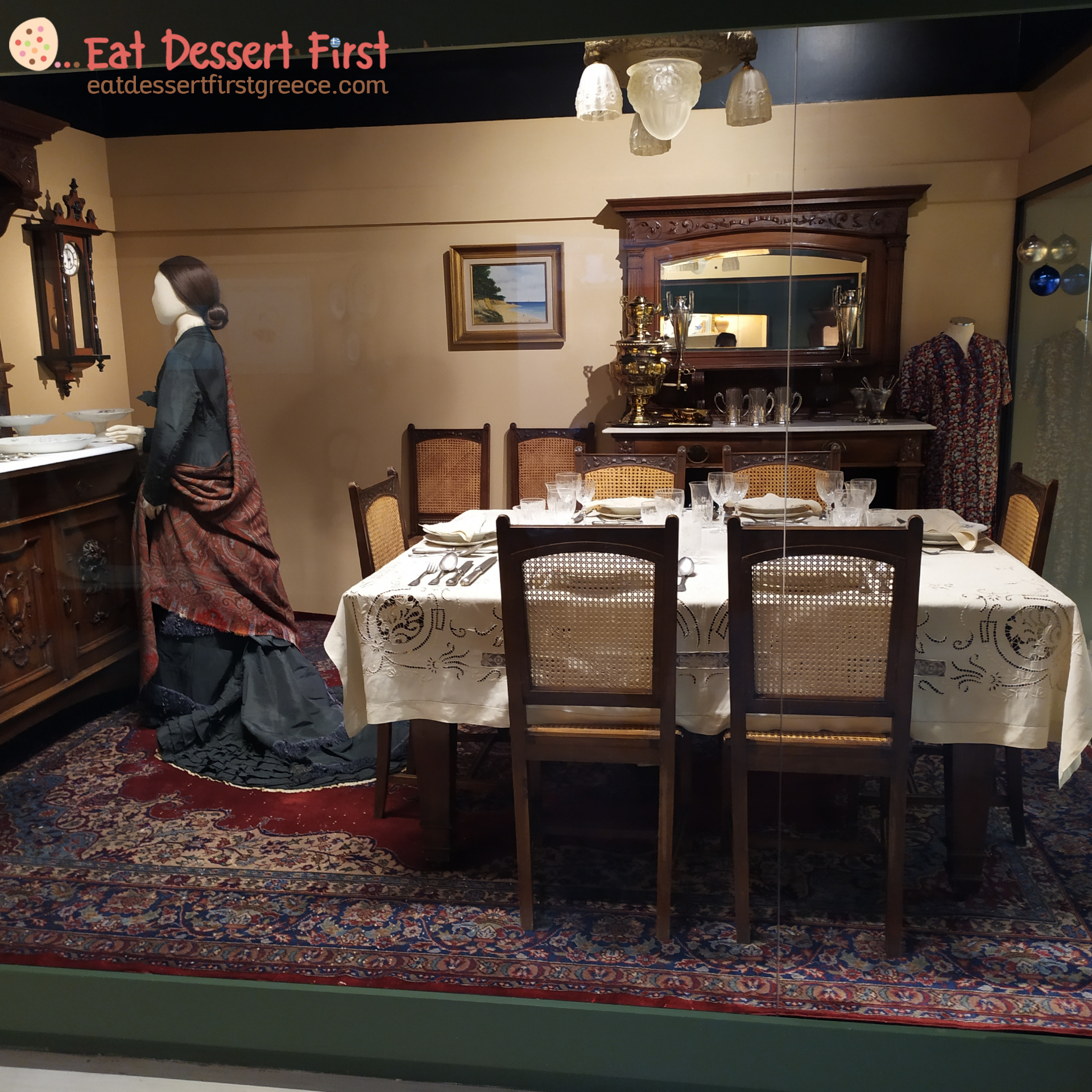

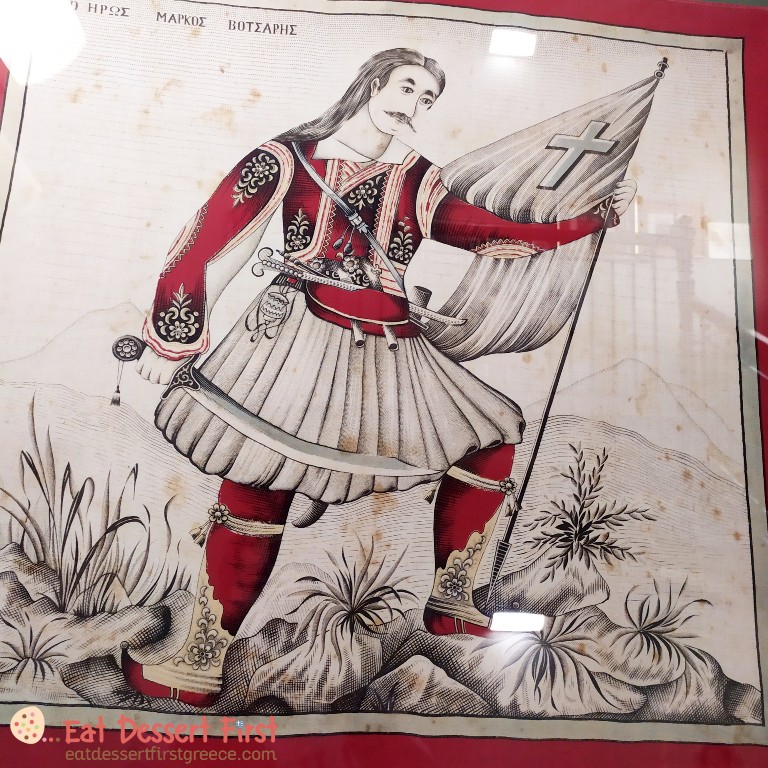
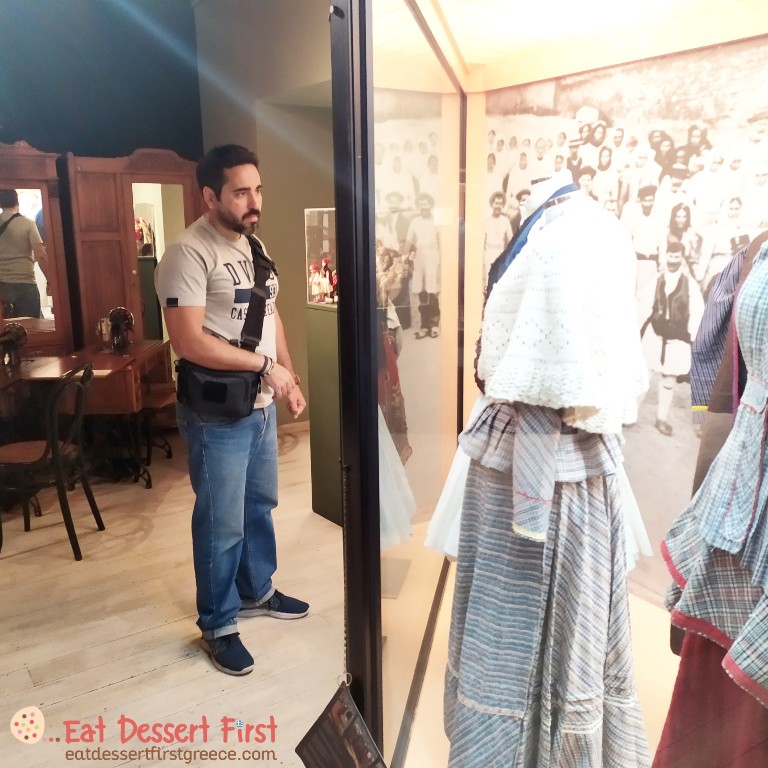



In the texts of the exhibition we read, among other things, about the history of Nafplio and the important personality of Ioannis Kapodistrias, the first Governor of Greece. We also saw Ioannis Kapodistrias come to life in front of us with a figure placed in an office of the time.




Discussion with Mrs. Ioanna Papantoniou, founder of PFF
At the Folklore Museum we met Mrs. Ioanna Papantoniou, founder of the Peloponnesian Folklore Foundation. We asked her to answer some questions about the Museum of Childhood which we would visit later and she did us the honor of accepting.
Mrs. Ioanna Papantoniou is the founder of the Peloponnesian Folklore Foundation “Vasileios Papantoniou”. She told us that the foundation and all the work of the foundation honour the memory of her father, who was one of the founders of the well-known company of tomato products “Kyknos”. Mrs. Ioanna Papantoniou has worked as a scenic and costume designer.



Mrs. Papantoniou told us that the Childhood Museum is the first of its kind in Greece. It was founded in 1989 and is called “Stathmos” (meaning station) because it is located in the old railway station, and specifically in the old engine room. The municipality has granted the space to PFF for many years.
For a time the museum functioned very well, with a variety of exhibits, but later it became a drug addicts’ place. Thus, they were forced to close the museum for many years. When the mayor put the situation in order, he partially renovated the area.
Stamatis Zanos, a regular associate of the foundation, made a proposal that was very much against what was already in the property, but Mrs. Papantoniou liked it so much that she let him do it. The outdoor space, which will be a kind of labyrinth, has not yet been completed. The children will have to go through the maze as a “challenge” to enter the museum.
Ms. Papantoniou pointed out that it is very difficult to repair the wagons, because they were so vandalized. Now they have managed to bring them to a good condition, and they are moving slowly but steadily. At the moment the exhibition stops at a certain point, but once the wagons are ready the exhibition will be all over the place.
Ms. Papantoniou also told us that their collections have around 45,000 toys. A small part of the collection is exhibited in the exhibition. The collections have been created slowly, with objects of the PFF, but also donations. The wagons are being carefully repaired because they want the warehouse of the collections to be there.

The exhibition that we will see at the Childhood Museum is only a small part that covers the idea of the exhibition “From Childhood”. We asked Ms. Papantoniou about the educational programs for which the museum is famous and she told us that the educational programs are what “provided” for them, but with the current state of the pandemic they do not know what will happen. They also did educational programs at the Folklore Museum. For the educational programs the person in charge is Kassiani Plati, who has innovative ideas. That’s how we ended our discussion -we hope that all the original and interesting programs we read about will be able to take place again soon!
Visit to the Childhood Museum “Stathmos”
We continued our museum course in the direction of the Childhood Museum “Stathmos”, about which Mrs. Ioanna Papantoniou had told us. Arriving at the site, at the old train station from which it takes its name, we saw the wagons that were being prepared to house the museum’s collection. We entered the small building that currently houses the museum and met the person in charge Mrs. Niki Skouteri. who informed us about the idea of the exhibition.


The exhibition covers two levels, the lower floor and a smaller first floor-balcony. The exhibits are placed in display cases on the walls, while there are also various objects hanging from the ceiling. The exhibition is based on the collection of the Peloponnesian Folklore Foundation, which includes children’s toys and items of both sexes -clothing, items related to nutrition and hygiene, school supplies, etc.- items related to cornerstones in children’s life such as birth and baptism, as well as the participation of children in the social life of mainly rural communities. The collection also has theater objects of Karagiozis and puppet theater.

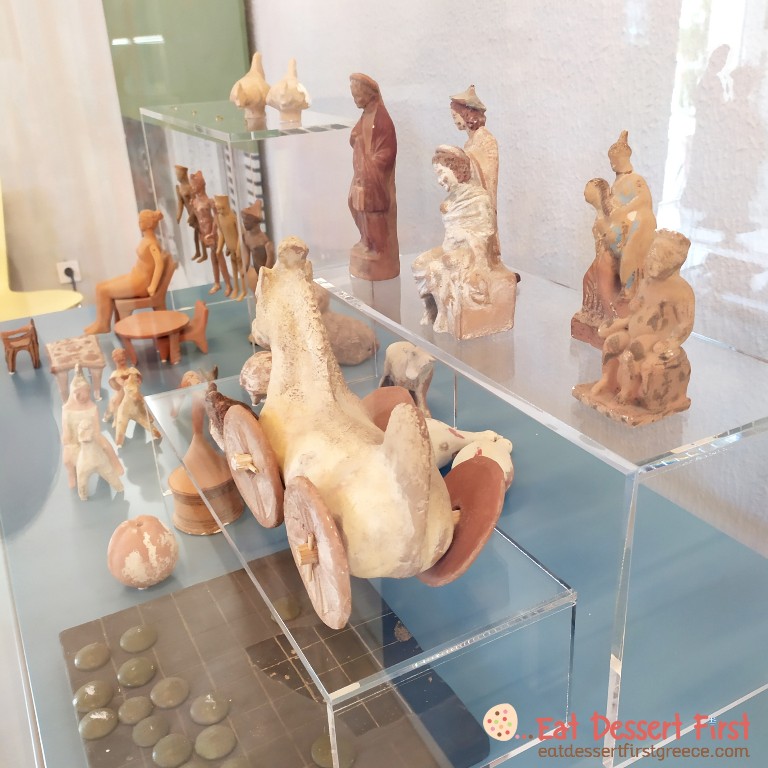
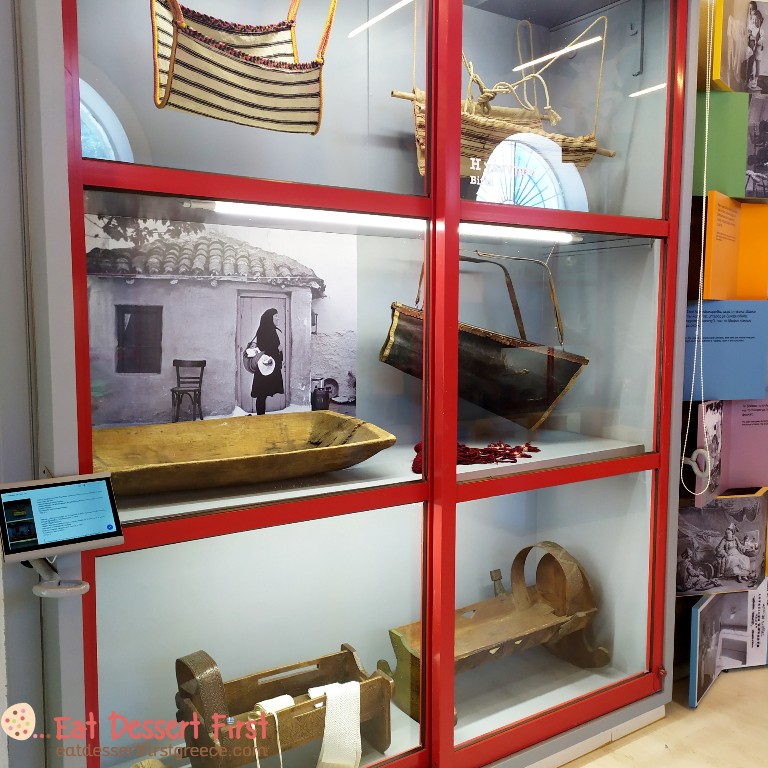

Upstairs is the collection of toys of two girls, Rena and Maria-Rosa, who were born in 1938 and 1948 respectively. According to the exhibition texts, their toys show the preferences of the girls of the time. The upper floor is therefore a woman’s affair!


The exhibition is organised with a modern museological approach, which places great emphasis on educational programs. For this reason the central part of the building includes small seats for children. The texts in the exhibition are printed on surfaces that resemble cubes placed on top of each other, creating a childish and playful atmosphere. The exhibition uses the technology, having all the captions of the exhibits in digital form on tablets that the visitor can explore.

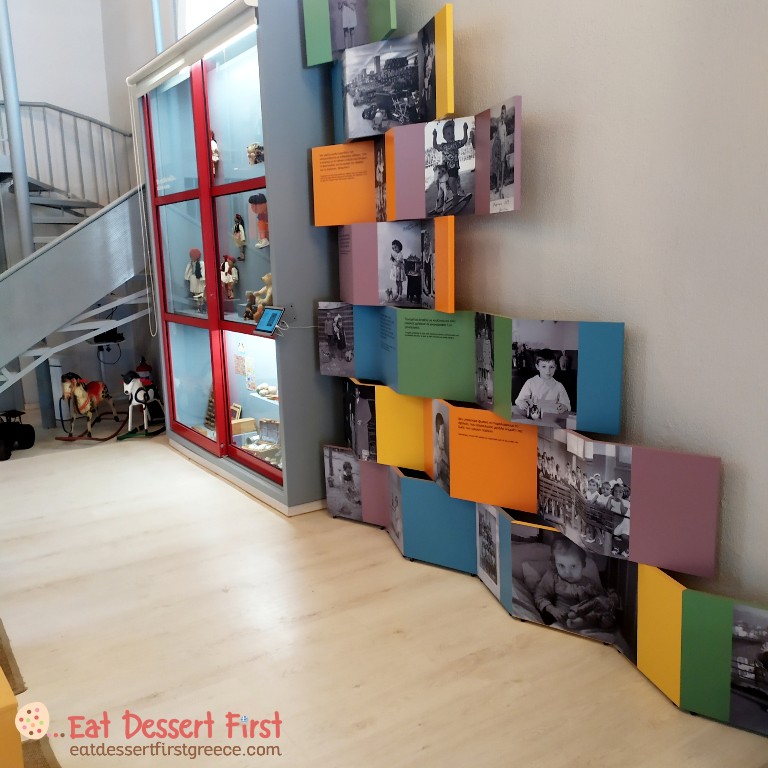

For dessert to the Kostopoulos bakery
With all these nice things we saw, our appetite opened up a bit… But going somewhere for dinner, we wanted to find a souvenir for Athens. And because we love desserts as you know, we decided to head to a bakery, which we had heard that makes a fantastic galaktoboureko!
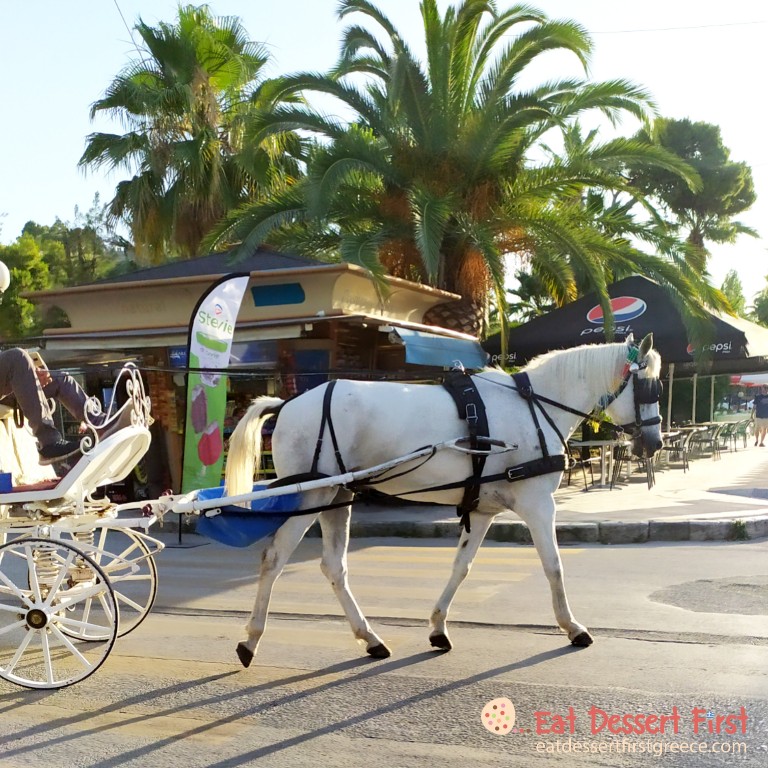
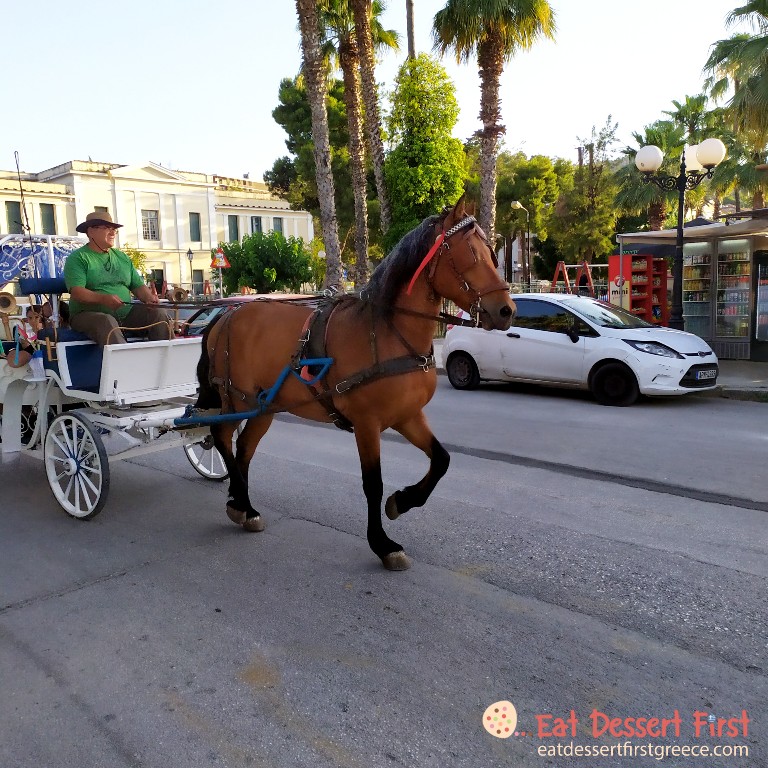
The bakery we headed to was the family Kostopoulos bakery, with a tradition from 1978, just outside the old town of Nafplio. The shop is located in the place we visited, while the main store has been located for forty years in the nearby village of Adami, Argolida. From there it gets the name “Adami”. The family, four siblings and their mother, as we were told, make everything on their own. They offered us a pan of galaktoboureko and a large sourdough bread, and we thank them very much!




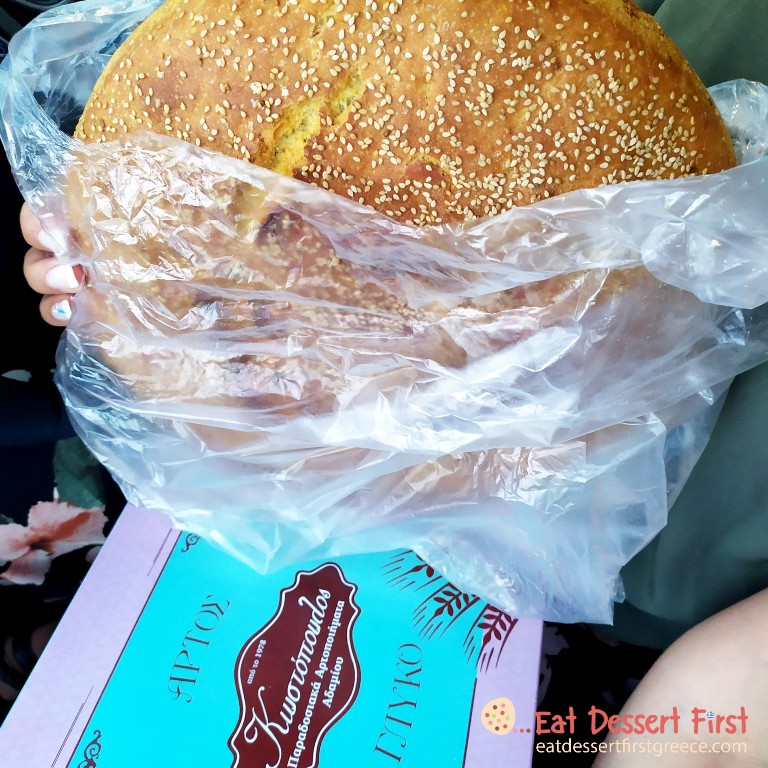

A lonely ascent to the fortress
After we got our presents from the bakery, George wanted to go up to the castle, but Eliza was tired. So, she sat on a bench and enjoyed the dusk. George did a small lonely ascent, and when he returned he told her the following:
I decided to combine the beautiful view with physical exercise so that I can burn calories and open my appetite! I started to climb from the sign that points to the fortress of Palamidi and as I went up the view became more and more beautiful! I met others going up, others going down and others doing gymnastics going up and down at a more intense pace, wearing sportswear. When I got up I took a deep breath, enjoyed the view and went down with some minus calories, which I would replace with the nice food of Stavlos, the restaurant we would go to later. The ascent was not difficult, little by little you go up even with moderate physical condition, so we recommend it to every visitor!

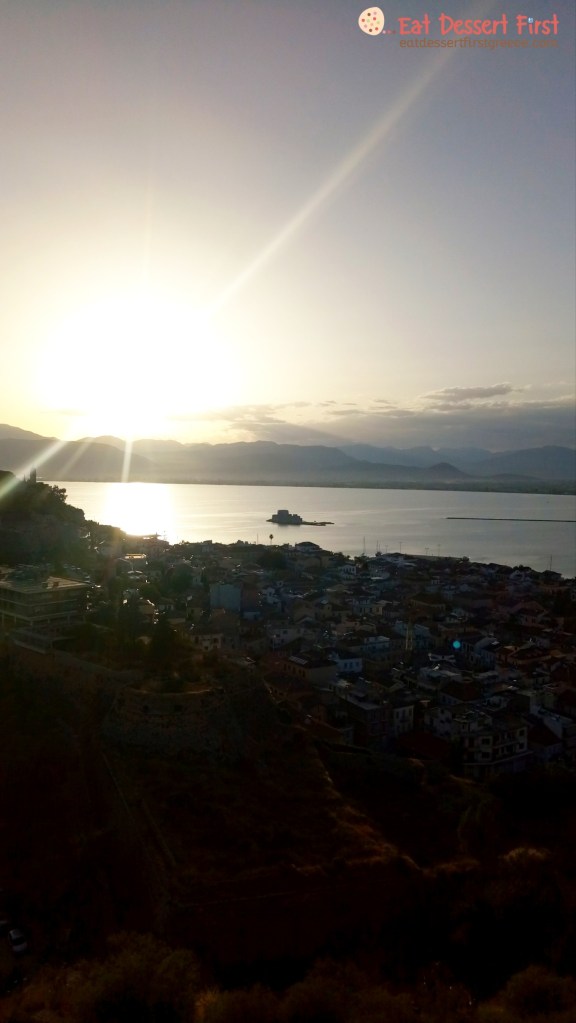
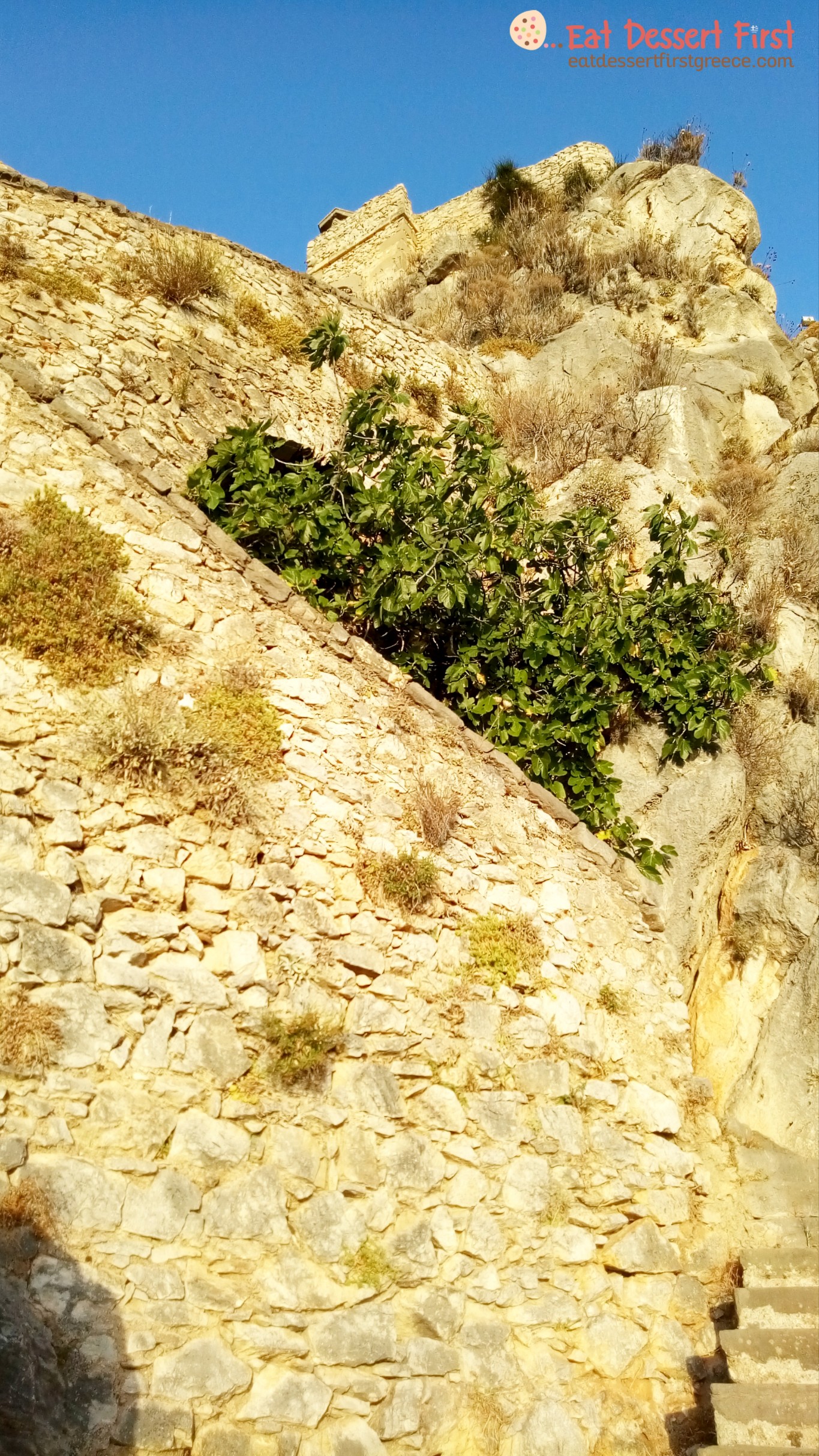

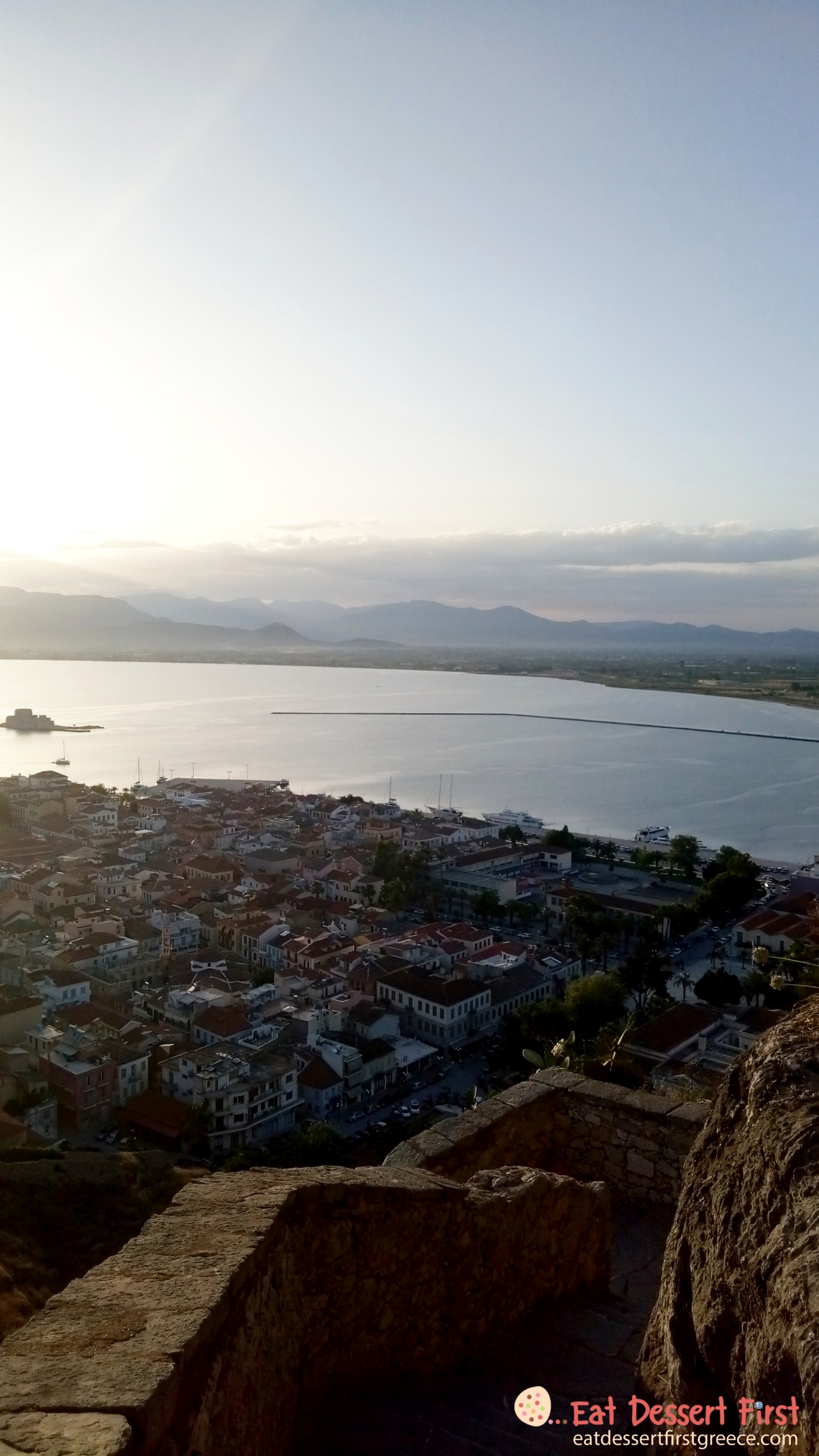

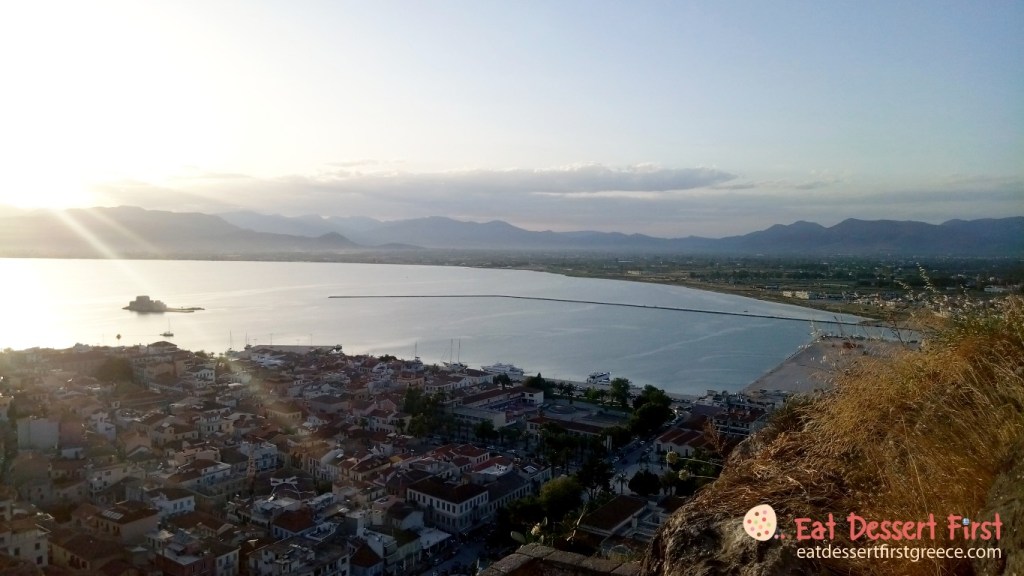
For meat to Stavlos restaurant and the story of the sweetest lawsuit
By nightfall, we headed to a restaurant, famous for its meat, and especially its lamb. Stavlos is a tavern ideal for groups of friends and family, in a quiet and clean environment, with really delicious food. We sat at our table and talked to the owner Mr. Nikos, who told us his story.
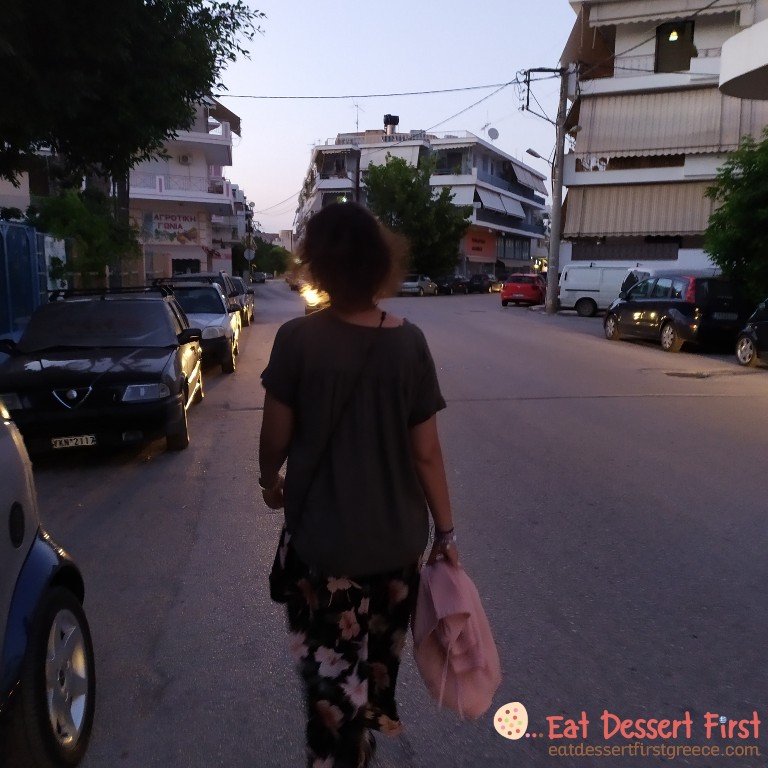

He told us that it all started with an out-of-court settlement. But let’s start from the beginning… With his wife they are a couple who came from Athens, decentralizing, because they were given the opportunity to have a job outside of Athens. They and their three children came to Nafplio to have a better quality of life. Mr. Nikos told us that their hobby was to invite people, to cook and to have a good time. They were not able to go out when they were hosting people, so they had barbeque at home. Above all, they liked good company.
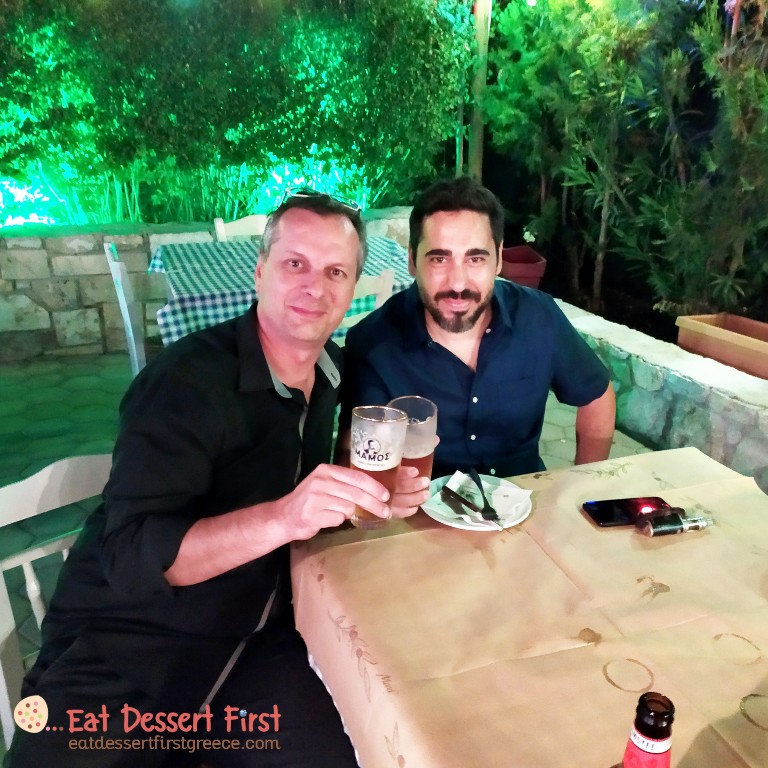



They had a neighbor who was bothered by the barbeque smoke. So she sent them a lawsuit, which Mr. Nikos has in a frame in his shop, since it was the occasion to do what he loved professionally. He heard from a friend that the place was available, but at first he didn’t take it seriously, as he didn’t know anything about professional cuisine. But his wife persuaded him to take this step, so that they can tell their children that at least they tried.

The store is now five years old, years with a lot of dreams, a lot of passion, a lot of love. All they had in mind was what they wanted as customers and how they liked to be served and approached. They had, as Mr. Nikos mentioned, the instinct of an amateur. In the first year they had debts to pay off, in the second they built the professional kitchen, in the third year they built the outdoor space, and today the restaurant is really wonderful.

They had a dream, to bring the village to the city, ribs on the coals in Nafplio. They wanted you to eat very good and quality meat, properly cooked, and at the same time the store to be clean, modern and attractive. They did their hobby and they made it… We tried many different plates and they were all delicious!


Mr. Nikos told us that the character of his shop is to be a discovery just outside the old city… A hidden jewel, we added! That’s why it doesn’t do a lot of advertising. People discover it and love it very much! And we loved it too and even became friends with Mr. Nikos! We thank him very much for our delicious meal.
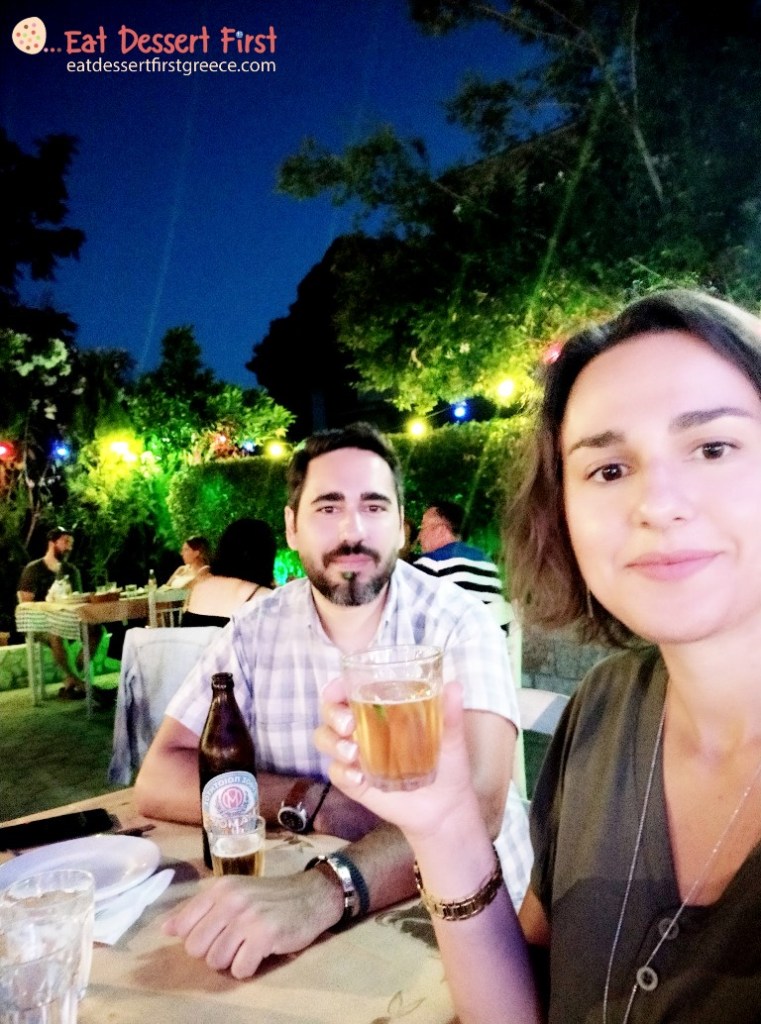

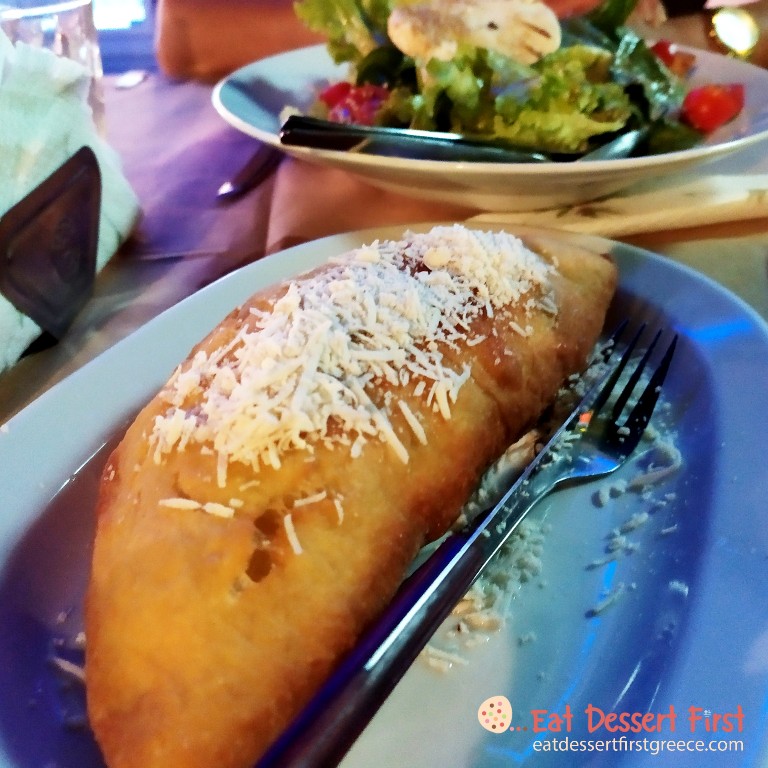

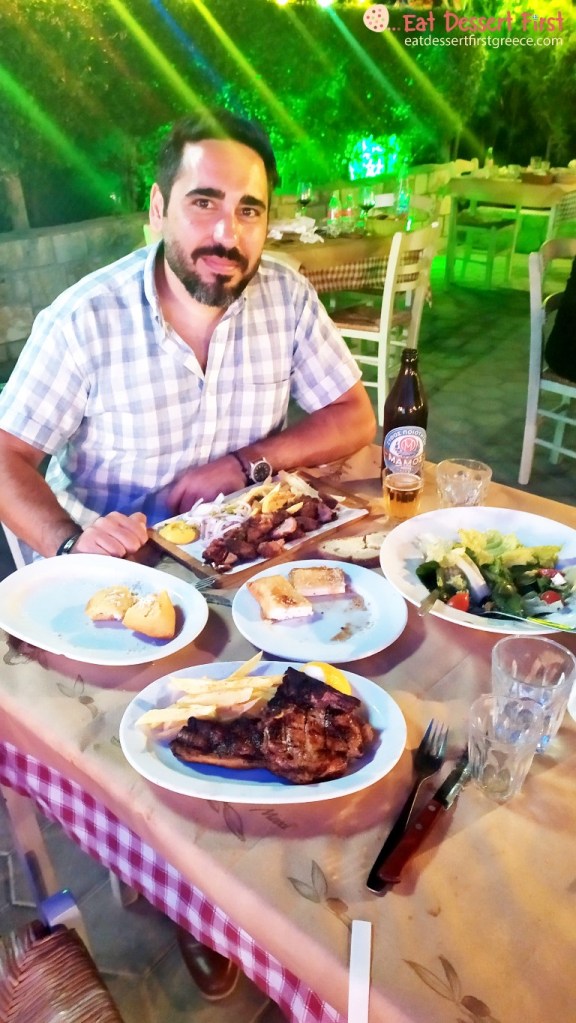
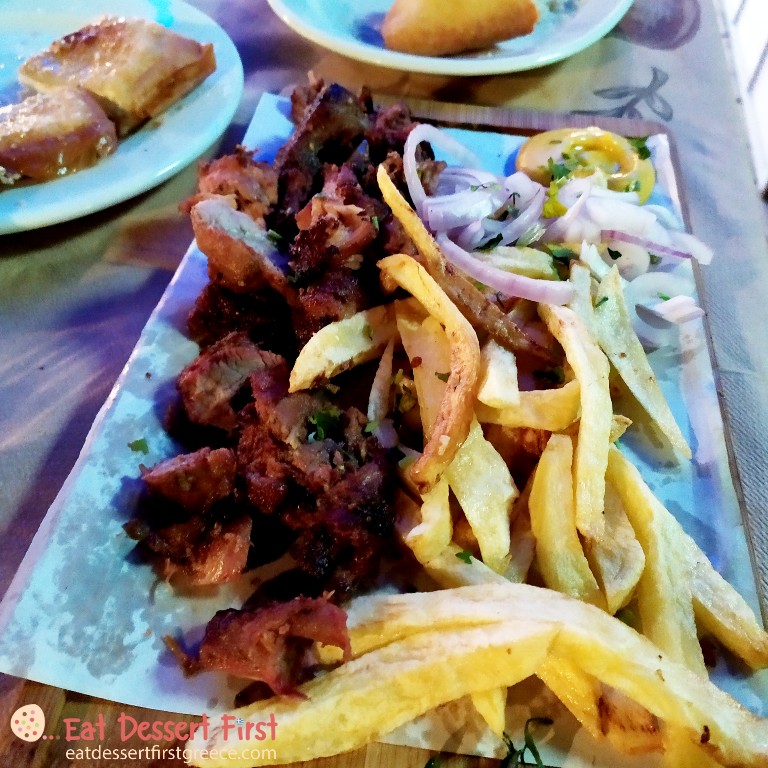

To finish our nice meal we ate a refreshing watermelon, said goodbye to our new friend and headed back to the old town for what else? A sweet to close the day!



Ice cream from Koustenis
We entered the alleys of the old town and arrived at the ice cream shop «Koustenis». The store has been located in Nafplio since 1980 and at this point since 2001. It is a family business of two brothers, which is very popular in Nafplio! It even has a store in Athens, as we were told. We were treated to a variety of ice cream flavors, from classic vanilla to kadayifi, and they were all perfect!
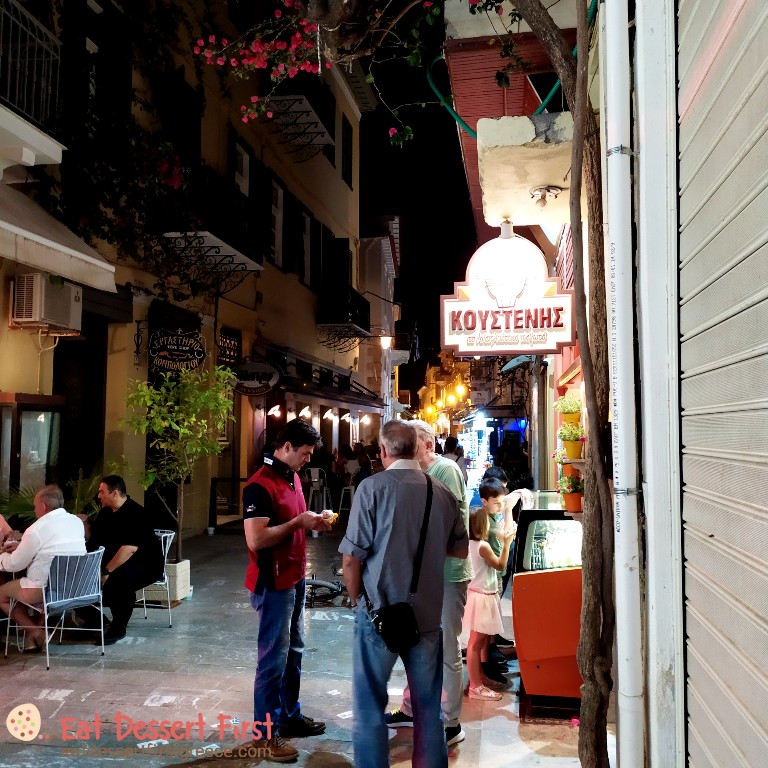







Back to the hotel for a chat with Dimitra
Returning to Hotel Ippoliti, we met Dimitra at the reception, who discussed with us tourism in Nafplio. Dimitra told us that she has been working at the hotel since 2005, while her origin is from Sparta.

We asked Dimitra about tourism in Nafplio and she told us that it is crowded all year round. Most traffic is from March to the end of October, but also in winter. There are also people from companies coming. This year, things have turned upside down for everyone, but especially for tourism, because people are afraid to travel. Groups with elderly, who are a vulnerable group, cannot come.

Dimitra told us that Greek and foreign tourists both come to Nafplio. Many French, Dutch, English, some Italians and many Germans come from abroad. Visitors also come from Sweden, Norway and other northern countries. Many tourists also come from America, Canada and Australia. Not many visitors come from China, mostly on cruises or for a one-day trip. Also not many visitors come from Balkan countries. We wished Dimitra and all the tourism sector to overcome the difficult situation quickly, in our country, and everywhere too, and we went up to our nice room to rest for the next day of our return to Athens.
Breakfast at hotel Ippoliti
In the morning we enjoyed once again the wonderful breakfast of the hotel. The kind and helpful employees served us on our plates, taking all the necessary precautions, and we sat down by the pool again, to organize our last visit and our return to Athens. Everything we enjoyed was once again fresh and delicious!





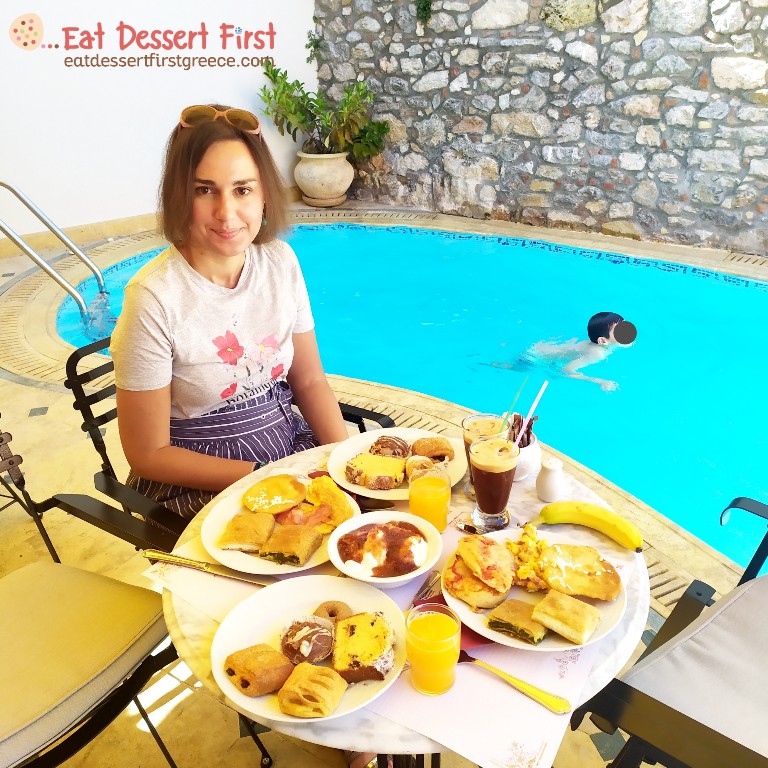


Visit to the Holy Monastery of Panagia Katakekrymmeni-Portokaloussa and discussion with Mrs. Matina
Leaving Nafplio and before returning to Athens, we definitely wanted to visit a monastery. So, we chose the Holy Monastery of Panagia Katakekrymmeni west of the city of Argos and we headed there by car.

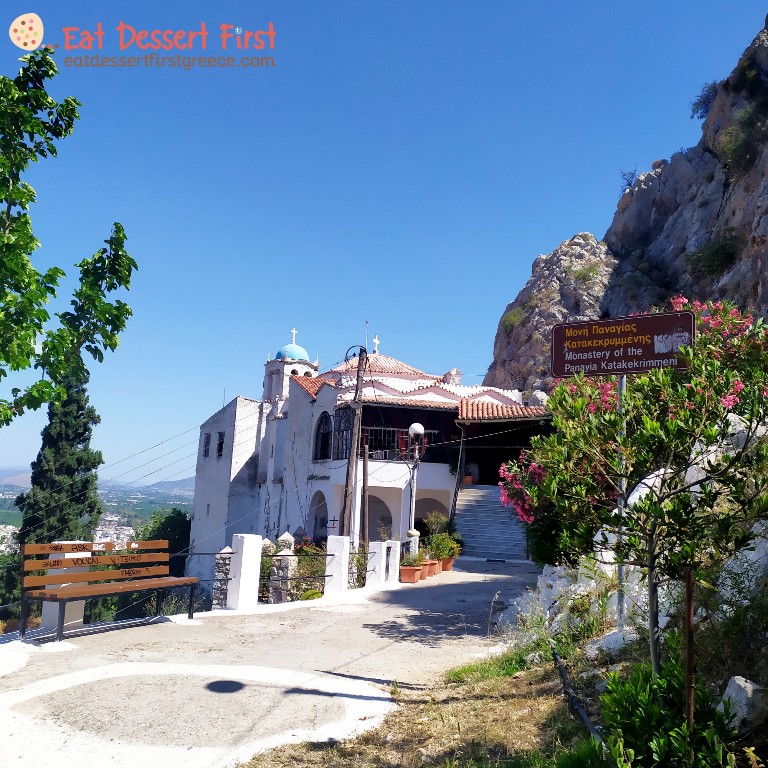

As we have read, the Holy Monastery is built on a steep rock. It is called Katakekrymmeni (meaning hidden) because an image of the Virgin Mary was found in the cave under the temple. A strong glow led the Christians to the cave or a faithful Christian, after a dream, led people to this point. The monastery is also called Portokaloussa (name originating from the Greek word for oranges) because of an old custom, according to which people threw oranges at the newlyweds who visited the monastery during its feast at the Entrance of the Virgin Mary into the Temple (November 21).
The history of the monastery is very old. There is a written testimony of the 10th century which informs about a nunnery of Virgin Mary in Argos. The monastery was re-established in 1700 as a male monastery and its activity continued until 1856 when it became a parish church.
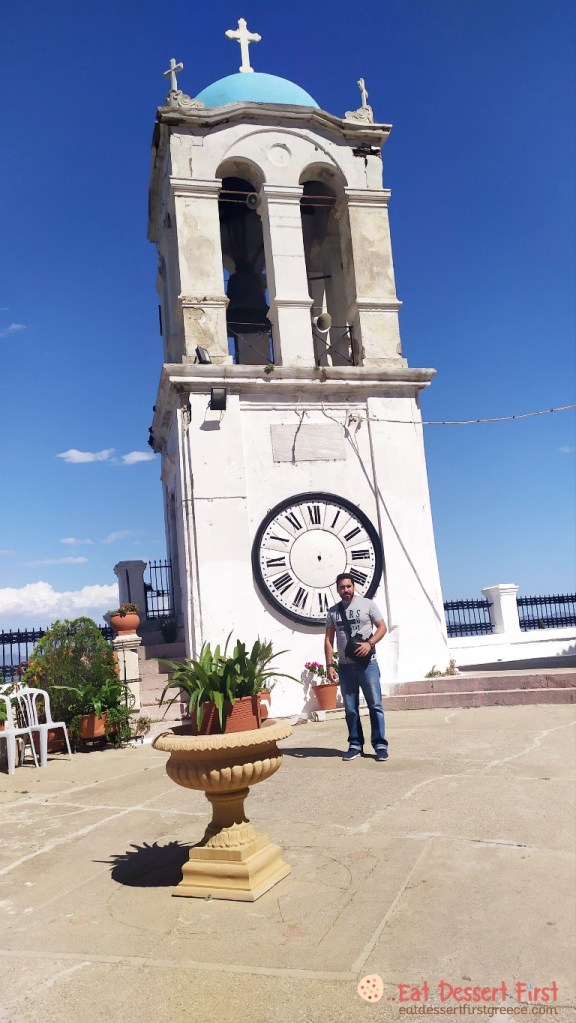
The monastery is associated with many events of the pre-revolutionary and post-revolutionary period. The first school of Argos operated in the monastery in 1798, in which Germanos III of Old Patras (an Orthodox Metropolitan of Patras who played a great role in the Greek Revolution of 1821) was a student. It operated as a school after 1821.

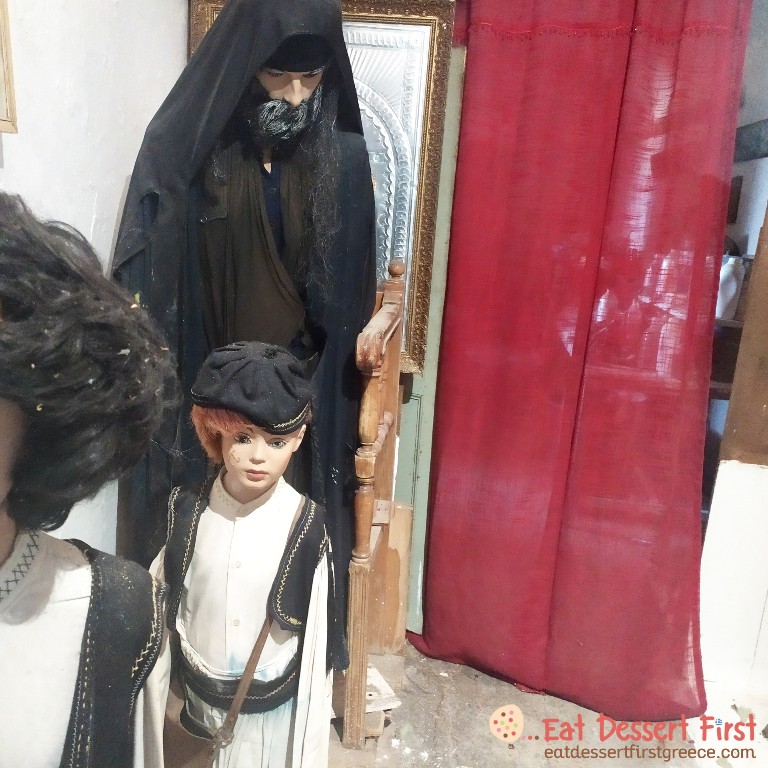


In the monastery we met Mrs. Matina who spoke to us willingly about the monastery. She told us that a lady is coming to the monastery to do free knitting lessons for the mothers who brought their children to the catechism, which we found a very nice idea… The children are learning to paint with father Joseph, who is a hagiographer.

Mrs. Matina showed us the miraculous image of the Virgin Mary that was found on the rock and was struck by lightning on the face.

Mrs. Matina told us that a lot of people come to the monastery and that they also perform baptisms, memorial services, and other services. People come from Argos and Nafplio, but also from Athens.
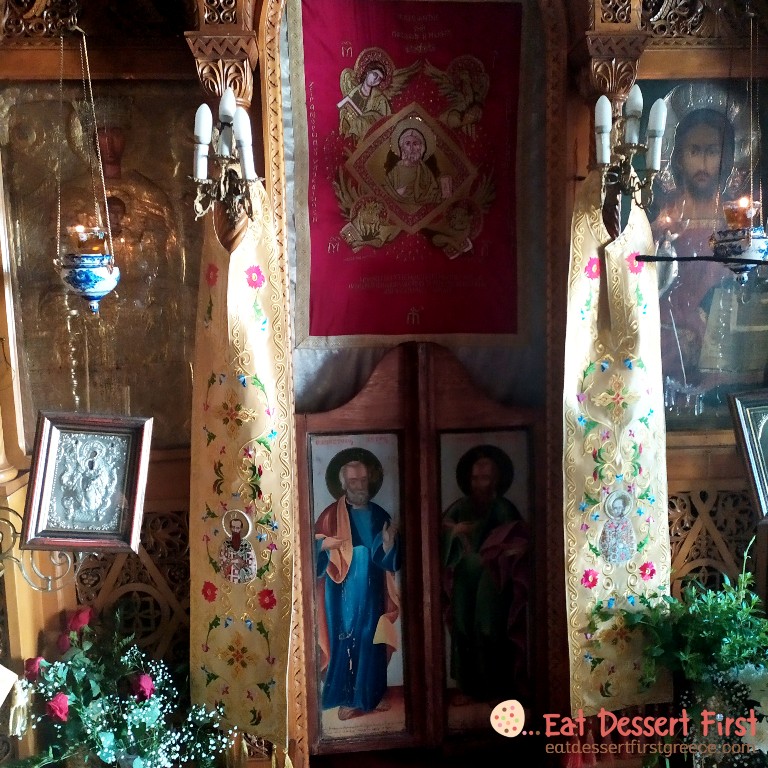
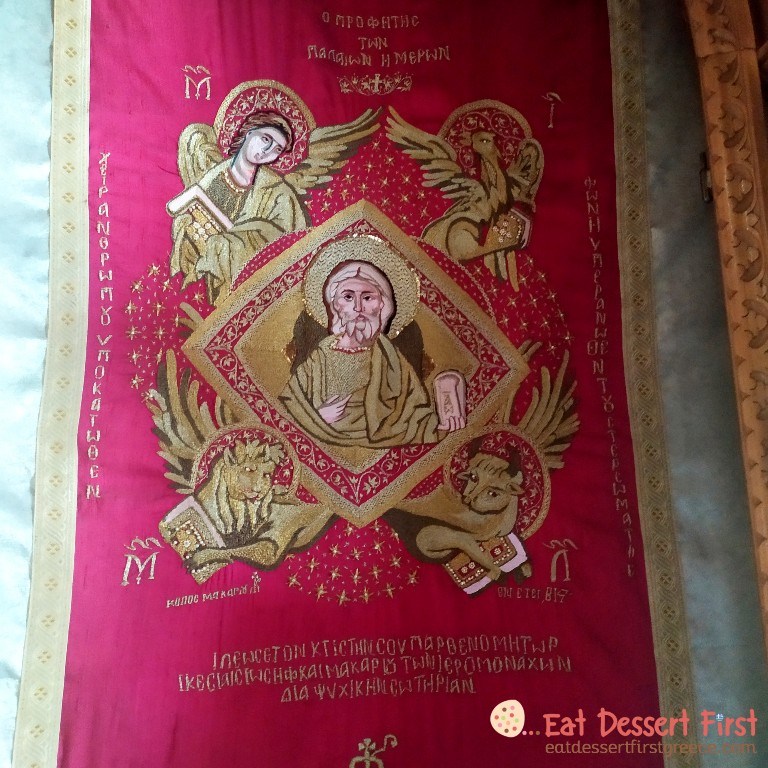
Then Mrs. Matina showed us the relics of the saints, Saint Charalambos, Saint Panteleimon and the foot of Saint Athanasios. She also showed us a decorative tree, donated by a woman from Athens, who had cancer and got well with the help of Virgin Mary.
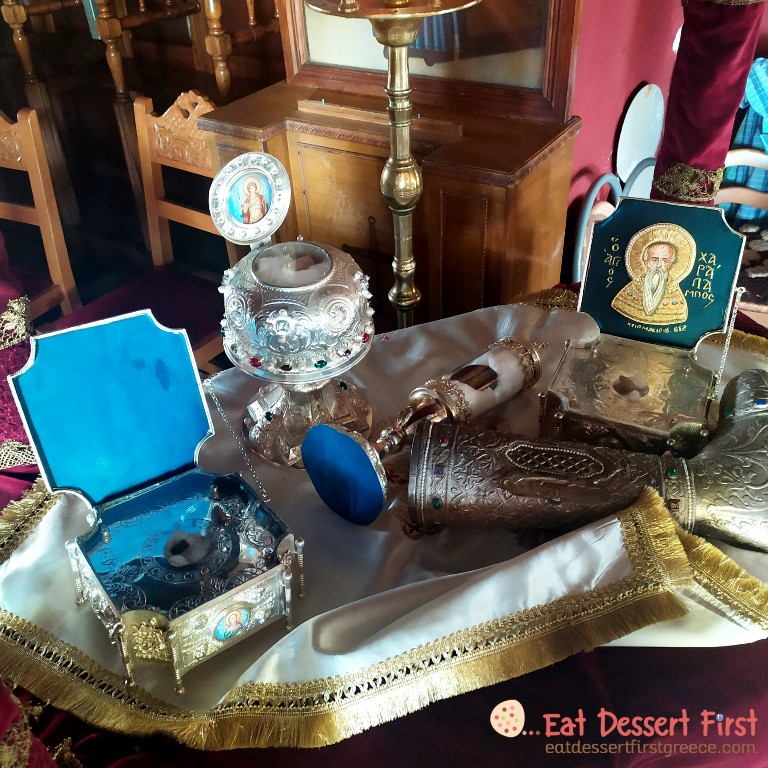
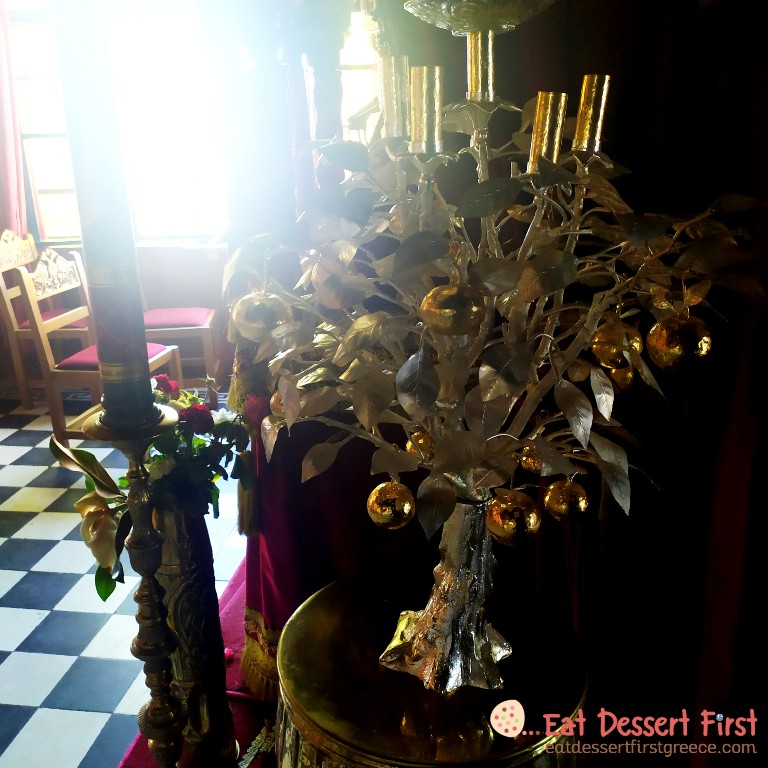
Then Mrs. Matina described us the custom of bringing and throwing oranges at the monastery’s celebration on November 21st. She invited us to come too, and with great love we said goodbye to her and took the road back.




This is how we will close our journey… Next stop, Aegina! Stay tuned!

